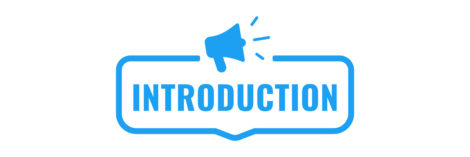First published in June 2018, the Government’s Data Ethics Framework is another way of protecting our sensitive information in a data-driven world. The framework was then updated in September 2020 to be more extensive and to create more awareness of these guidelines.
Yet despite this, many are still unaware of what this framework actually is and what purpose it serves. That’s why we’ve put together this guide.
Below, we’re going to explain the Data Ethics Framework by answering the six following questions:
- What is the Data Ethics Framework?
- What is it for?
- Who is it for?
- How do you use it?
- What is the structure?
- What are the principles and actions of the Data Ethics Framework?
So let’s get started.
What is the Data Ethics Framework?
Put simply, the Data Ethics Framework is a set of principles that have been laid out by the government to guide the appropriate use of data in the public sector.
These are relatively new legislation and codes of practise and have been created as part of the movement to better protect our data.
The framework is centred around the individual and these principles and initiatives must be adhered to alongside existing data protection laws such as General Data Protection Regulations (GDPR).
What is it for?
As we’ve briefly touched on above, the Data Ethics Framework is there to guide those working in the public sector on how to use data appropriately and responsibly.
The overall idea is to help public servants better understand any ethical considerations that could arise from their work and the codes of practice they must abide by when handling data.
As such, public servants and multidisciplinary teams must work through the framework whenever they are planning and starting a new project. There are also parts of the framework which are designed to be revisited throughout any project, especially if there are any changes to how data is being collected, used or stored.
As we said, these principles are relatively new but have already been amended and updated. This was after extensive consultation with those who are actually using the framework to better support their needs.
We’re going to look in more detail at who uses this framework in the next section.
Who is it for?
This framework is designed for anyone who is working with data in the public sector, whether that’s directly or indirectly. This includes anyone that falls into the following categories:
- Data practitioners such as statisticians, analysts and data scientists
- Policymakers
- Operational staff
- People helping to produce data-informed insights
Now, this list is by no means exhaustive but it includes some of the key groups that will be required to adhere to these principals and practices.
How do you use it?
As we mentioned earlier, public servants like those listed above must work through the framework whenever they are planning and starting a new project. As such, the framework is made up of different sections, each with its own set of questions.
These questions guide the individual or team through various ethical considerations and how these might apply to their project. This requires going through and recording their answers to create a data ethics self-assessment. This can then be compared to the self-assessment scoring scale.
What’s more, the framework provides a number of specific actions that individuals must take at each stage of the project in order to advance transparency, accountability and fairness.
What is the structure?
We’ve briefly mentioned the different sections above, these make up the structure of the framework. The structure is designed and laid out to guide users through the different stages of their project and make it easier to understand.
This is split into overarching principles and specific actions that must be taken at each stage. These are given a rating between zero and five, with zero being unacceptable and five being the best possible outcome that meets all the criteria of the principles.
We’ll look at these in more detail in this next section.
What are the principles and actions of the Data Ethics Framework?
There are three overarching principles in the Data Ethics Framework and five specific actions that must be taken. These include overarching principles:
Transparency
The first principle is transparency and means that all actions, processes and data are made open to inspection and are accessible to the public by publishing the data in a free format.
Accountability
Accountability means there must be effective governance and oversight mechanisms in place for any project. Accountability is important to guarantee that any government initiatives that have been set out are meeting their stated objectives and respond to the needs of the community.
Fairness
The final principle is fairness, which is vital to eliminate any discriminatory effects on individuals and social groups, even if this discrimination is unintentional. You can find out more about fairness in the ‘Understanding artificial intelligence ethics and safety’ guide developed by the Government Digital Service.
as well as specific actions:
Define and understand the public benefit and need
When starting any new public sector project, you must have a clear understanding of its purpose and who it serves. As well as having clarity on what the project aims to achieve and the needs of those who will be using the service (or those who will be affected by it).
Create a diverse team with diverse expertise
Diverse, multidisciplinary teams can bring a wide range of skills to the table, therefore it is important to involve a range of people from your team or wider network, with different expertise and experiences.
Comply with the law
You must be aware of the relevant laws and legislations that relate to the use of data, for example, GDPR. You must then comply with these at all times.
Understand and review the quality and limitations of the data
You must ensure that any data use for a project is accurate, representative, proportionally used and is good quality. You must also explain the limitations of this data.
Evaluate and consider wider policy implications
The final action that must be taken is to continuously evaluate whether insights from data are being used responsibly during the project. This means getting a robust evaluation plan and effective accountability mechanisms in place early on.
Posted in big data.

